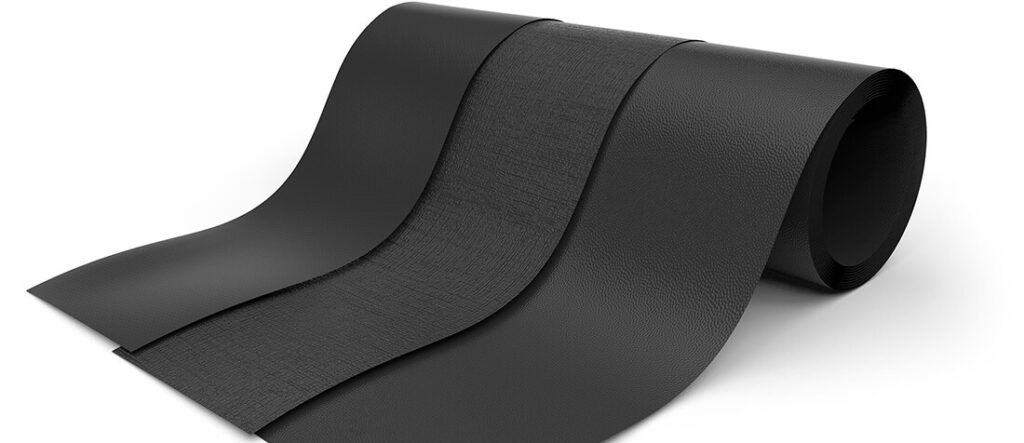Diverse Types of Rubber with Unique Advantage
Date:2024-02-21
Nowadays, as people’s understanding of rubber deepens, rubber technology is also improving day by day. Both natural rubber and synthetic rubber have become necessities in our lives. So do you know what the specific uses of rubber are? Let’s find out!
According to the properties and uses of rubber: In addition to natural rubber, synthetic rubber can be divided into general synthetic rubber, semi-universal synthetic rubber, special synthetic rubber and special synthetic rubber.
So let’s take a look at the main types and advantages, disadvantages and characteristics of these rubbers.

- Natural rubber (NR)
The comprehensive properties of natural rubber are relatively comprehensive and the processing technology is simple. The disadvantage is that its oil resistance, heat resistance, cold resistance, chemical resistance, aging resistance and other properties are too poor, far inferior to other synthetic rubbers. Mainly used in tires, hoses, tapes, medical supplies, sporting goods and some other industrial supplies.
- Styrene-butadiene rubber (SBR)
The comprehensive properties of styrene-butadiene rubber are equivalent to those of natural rubber, while the abrasion and thermal aging properties are better than those of natural rubber. It is used with natural rubber and various synthetic rubbers and has good processing performance. It is a general-purpose rubber. Mainly used in hoses, tires, tapes, rubber shoes, and various industrial rubber products.
- Butadiene rubber (BR)
Butadiene rubber has good processing properties, excellent wear resistance and elasticity, less heat generation, and good low temperature resistance. The flex resistance is also good, but the disadvantage is that the tear strength and slip resistance are not good. Widely used in tires, hoses, tapes, rubber shoes and other rubber products.
- Neoprene (CR)
Neoprene rubber has good ozone resistance, weather aging resistance, oil resistance, solvent resistance, flame retardancy, insulation, water resistance, air tightness, tensile strength and other aspects. The disadvantages are poor cold resistance and high specific gravity (density). Suitable for hoses, tapes, conveyor belts, wires and cables, air-conditioning rubber products, and sealing products for buildings, ships, automobiles, etc.
- Nitrile rubber (NBR)
Nitrile rubber can be used at temperatures below 120 degrees for a long time. It has good air tightness (second only to butyl rubber) and has excellent oil resistance, wear resistance, and tear resistance. (Note: This material is a semiconductor rubber, so it is not suitable. (Making insulating products) Suitable for automobiles, seals, cable sheaths, sponge products, etc.

- Ethylene propylene rubber (EPM\EPDM)
It is a copolymer of ethylene and propylene, generally divided into ethylene-propylene diene rubber and ethylene-propylene diene rubber. It is characterized by excellent ozone resistance, UV resistance, weather resistance and aging resistance, ranking first among general rubbers. It has good electrical insulation, chemical resistance, impact elasticity, acid and alkali resistance, small specific gravity, and can be used for high filling and matching. The heat resistance can reach 150℃, and its other physical and mechanical properties are slightly inferior to natural rubber and better than styrene-butadiene rubber. The disadvantage is that the self-adhesion and mutual adhesion are very poor and it is not easy to bond. Operating temperature range: about -50℃ ~ +150℃. Mainly used as chemical equipment linings, wire and cable sheaths, steam hoses, heat-resistant conveyor belts, automotive rubber products and other industrial products.
- Silicone rubber (Q)
It is a special rubber whose main chain contains silicon and oxygen atoms, of which silicon plays a major role. Its main feature is that it is resistant to both high temperature (up to 300℃) and low temperature (minimum -100℃). It is currently the most cold-resistant and high-temperature resistant rubber. It also has excellent electrical insulation and high chemical inertness. The disadvantages are low mechanical strength, poor oil resistance, solvent resistance and acid and alkali resistance, and it is more difficult to vulcanize and more expensive. Operating temperature: -60℃ ~ +200℃. It is mainly used to make high and low temperature resistant products (hose, seals, etc.) and high temperature resistant wire and cable insulation layers. Because it is non-toxic and tasteless, it is also used in the food and medical industries.
- Acrylic rubber (ACM\AEM)
It is a polymer of ethyl acrylate or butyl acrylate. It is characterized by good heat resistance and oil resistance, and stable performance in lubricants containing sulfur, phosphorus and chlorine additives. At the same time, it is resistant to aging, oxygen and ozone, UV resistance, and excellent air tightness. The disadvantage is poor cold resistance. Swells severely in water-soluble solutions such as methanol, ethylene glycol, and ketone esters. At the same time, it has poor elasticity and wear resistance, poor electrical insulation, and poor processing performance. Operating temperature range: approximately -25℃ ~ +180℃. It can be used to manufacture oil-resistant, heat-resistant and aging-resistant products, such as seals, hoses, chemical linings, etc.
- Chlorosulfonated polyethylene rubber (CSM)
It is an elastic polymer obtained by chlorination and sulfonation of polyethylene. It is resistant to ozone, has excellent aging resistance, and has better weather resistance than other rubbers. It has good flame retardant, heat resistance, solvent resistance, resistance to most chemicals and acid and alkali resistance. The disadvantages are poor tear resistance and poor processing performance. Operating temperature range: approximately -20℃ ~ +120℃. It can be used as sealing material on ozone generators to manufacture oil-resistant seals, wire and cable sheaths, oil-resistant rubber products and chemical linings.
Next: Delivery of Dia3000mm pneumatic rubber fenders to our clients successfully
RELATED
- What affects the performance of ship launching airbags?
- A batch of DD Fenders Successfully delivered to Europe
- New batch of cylindrical fenders were delivered in advance
- What kind of rubber fenders are used on tugboats?
- Malta – supply and installation of D-shaped rubber fenders
- D0.6m ship launching airbags were successfully delivery
- What are the methods of salvaging shipwrecks?
- Belgium Tender – Yokohama Fenders and pallets of mooring in Zeebrugge

